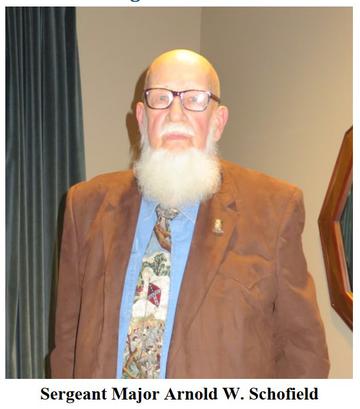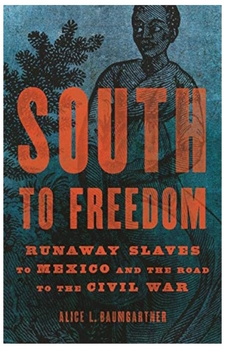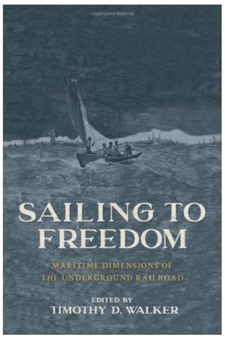|
|
|
|
February 2023 Meeting Summary

In honor of Black History Month, Arnold Schofield gave an excellent presentation titled: “Non-traditional Perspectives on the Underground Railroad and the Iron Clads.” The “Iron Clads” was the nickname given to the Second Kansas Colored Infantry regiment during the Civil War.
Arnold handed out a National Park Service brochure titled: “National Underground Railroad Network to Freedom.” The brochure includes a map showing how slaves escaped to northern free states, Spanish Florida, the Caribbean islands, Canada, and Mexico. The following are the main points of Arnold’s presentation:
- The “Border War” in the 1850’s was fought between pro-slavery forces and anti-slavery forces over whether Kansas would enter the Union as a free state or a slave state. However, 30-40 years before Kansas Territory was created in 1854, there was another border war that was fought over slavery.
- The lower northern states of Iowa, Indiana, Illinois, Ohio, and Pennsylvania shared a border with the slave states of Missouri, Kentucky, Virginia, Maryland, and Delaware. The population of the border states was divided idealogically. There were more slaves in Virginia than any other state. As early as 1815-1820, settlers on both sides of the Ohio River fought a border war. Thousands of slaves escaped overland into Illinois, Indiana, Ohio, and Pennsylvania.
- Some of the most publicized descriptions of the border war involved John Brown. He was a zealot who believed in dying for what he believed in. Brown constructed a building, known as Fort Brown, at the Marais des Cygnes massacre site in 1858. One night, Brown heard a knock at his door. It was an excaped slave who asked Brown to rescue the slave’s family. Brown brought the family back to Kansas. However, one of the rescue party killed the farmer who held the slave’s family.
- Arnold said there is a myth that slaves always traveled at night or in secret. John Brown took the slaves and traveled in wagons in broad daylight. They traveled to Topeka and then headed north. At the “Battle of the Spurs”, Brown defended the slaves and continued on. The slaves traveled through Nebraska Territory, Iowa, Illinois, Michigan, and then into Canada.
- In 1859, John Brown planned his raid on Harpers Ferry VA. He had three objectives: occupy the arsenal, take hostages, and take weapons. Brown planned to leave Harpers Ferry and escape into the nearby mountains. He wanted to build fortified structures on the “Great Trail” (Appalachian Trail) and hoped that the slaves would revolt and come join him. The slaves could then escape along the “Great Trail” into Pennsylvania. However, Brown did not succeed. Brown and his men were captured at the engine house in Harpers Ferry by U.S. Marines under the command of Robert E. Lee.
- Arnold said slaves escaping Texas and going to Mexico is a non-traditional aspect of the Underground Railroad. He referenced the book: South to Freedom: Runaway Slaves to Mexico and the Road to the Civil War. Before 1820, Mexico was ruled by Spain. According to Spanish law, any escaping slave that set foot in Mexico was automatically free. Canada had a similar law. In 1820, Mexico was freed by Spain. Texas had a lot of Americans that came from the south. They brought their slaves with them. When Texas became a republic in 1836 slaves were legal. Texas joined the Union as a slave state in 1845. Slaves escaped from southern Arkansas and Louisiana and traveled through Texas in order to get to Mexico. The Rio Grande River was a major crossing point for slaves escaping into Mexico.

- Slaves also escaped the Southern cities of Charleston SC and Savannah GA by traveling north on the Atlantic Ocean. The safest way to do that was to travel by sailing vessel or steamboat to Wilmington DE, New York City, New Bedford MA, or Boston MA. Arnold referenced the book: Sailing to Freedom: Maritime Dimensions of the Underground Railroad.

- Before the Civil War, sailing vessels and steamboats were a major source of transportation. These vessels handled the bulk of the trade along the Atlantic seaboard. A lucrative business was conducted by loading up supplies in Charleston SC and sailing back north. Before 1850, there was no inspection of vessels. However, slaves working on the waterfront started to disappear. Maritime labor in the 1800’s was integrated. Skin color didn’t matter.
- The slave labor force in southern cities such as Charleston and Savannah were mostly fishermen. They knew where the waterways were and knew how to move on the waterways. Slaves worked as dock workers, stevedores, teamsters, tradesmen, carpenters, etc. They also worked on steamboats. Captains would recruit slaves, who then became part of their crews. By 1858-1859, the government required ships to be inspected before they left port. A list of the crew was required. In the 1800’s ordinary seamen had to have protection papers. The captain of the ship filled out the papers. On his seaman’s paper, the Captain would state: “This man is an ordinary seaman.”
- In New Bedford MA, hundreds of slaves would hire onto whaling ships as ordinary sailors. New York City, Boston, and New Bedford MA had large African-American communities. The 54th Massachusetts regiment recruited former slaves. Two hundred African-Americans marched off to war as depicted in the movie “Glory.”
- The last part of Arnold’s presentation dealt with the “Ironclads”, which was the nickname for the Second Kansas Colored Infantry regiment. This unit was mustered in during the summer of 1863 at Fort Scott KS. Colonel Samuel Crawford was the commanding officer. In 1864, Crawford became governor of Kansas. The Second Kansas served in northern Arkansas and the Indian Territory protecting covered wagon trains. They fought at the battles of Baxter Springs KS and Jenkins’ Ferry AR.
- Under the command of Major General James G. Blunt, the Second Kansas assisted in the construction of Fort Blair at Baxter Spring KS. On October 6, 1863, General Blunt’s wagon train was attacked by QuantrilPs Raiders and very few of Blunt’s men survived. This became known as the “Baxter Springs Massacre.” QuantrilPs force then attacked Fort Blair. However, the Third Wisconsin Cavalry, under the command of First Lieutenant James B. Pond, and the Second Kansas Colored held off the attacking Confederates. Pond was awarded the Medal of Honor for defending the fort.
- At Jenkins’ Ferry AR on Arpil 30, 1864, the Second Kansas Colored was ordered to attack a Confederate battery. Ardor and adrenalin carried the day. Their battle cry was “Remember Poison Spring.” At the Battle of Poison Spring AR on April 18, 1864, members of the First Kansas Colored were massacred. The Second Kansas Colored was mustered out in 1865.
|
| |
|
|
|
|
|
|